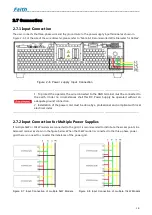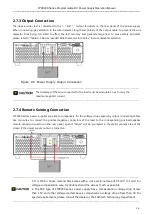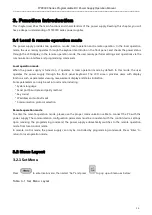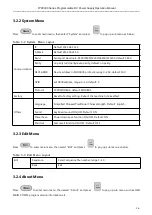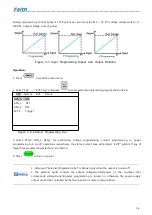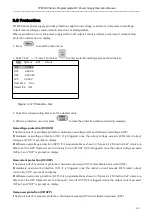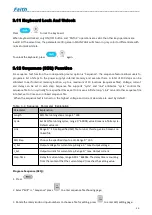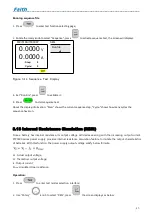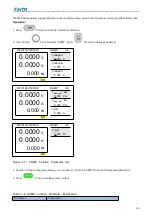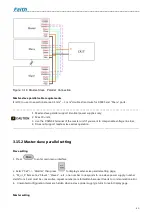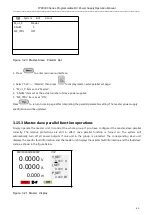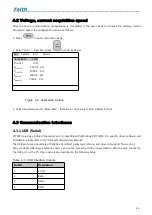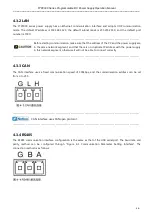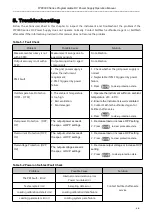
____________________________________________________________________________
- 33 -
Hardware overpower protection (OP): It is triggered once the output power exceeds 110% rated output power,
and “OP” is prompt on display.
Software overpower protection (OPP): It is programmable as shown in “Figure 3-12 Protection Set”. Users are
able to set the OPP threshold, set to 0 means to turn off OPP. OPP is triggered once the output power exceeds
OPP set, and “OPP” is prompt on display.
Low voltage protection (LVP)
It is programmable as shown in “Figure 3-12 Protection Set”. Users are able to set the low voltage protection
threshold, set to 0 means to turn off this protection. Low voltage protection is triggered once the output voltage
is below the set value, and “LVP” is prompt on display.
Reverse voltage warning (RVP)
It is triggered once the output polarities are reverse connected, and “RVP” is prompt on display.
Communication timed out protection (CMF)
When power supply is controlled remotely, you can turn on this protection. It is triggered if the host computer did
not send communication command to the power supply for a certain period, the power supply output will be
turned off and “CMF” is prompt on display. The triggering time can be set as in “Figure 3-12 Protection Set”, range
0.0 ~ 60.0 seconds.
Overtemperature protection
It is triggered once the temperature of inner power components exceeds allowed temperature range, “OTP1” or
“OTP2” is prompt on display.
3.9 Save And Recall
The power supply provides 20 groups of storage locations for users to save static output parameters, such as
voltage setting, current setting, power setting, voltage slope, and current slope to a designated internal memory
location, so that the user can easily and quickly recall and use. If the shortcut function is turned on, you only need
to press a number key to recall the saved parameters. This function can significantly reduce user’s operations and
improve test efficiency.
Operation
:
When users need to use the save and recall functions, they should first configure the parameters of the static
output. The following examples illustrate:
1. Switch to the static output (by pressing the V-Set, I-Set or P-Set button), set the voltage to 12V, the current to
10A, the power to 1000W, the maximum voltage slope, and the maximum current slope;
2. Press
to enter save state;
3.
Input number “1” and press
to validate the setting, so the setting parameters now stored to position “1”;
4. Change the static output parameters, set the voltage to 24V, the current to 20A, the power to 2000W, the
maximum voltage slope, and the maximum current slope;
5.
Press
to enter save state;

